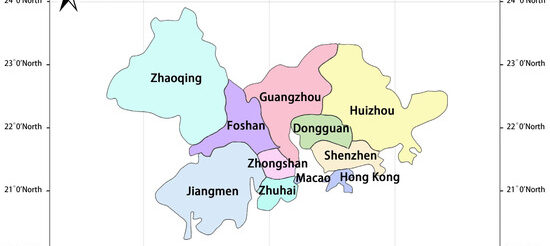Sustainability | Free Full-Text | Research on the Coordinated Development of Innovation Ability and Regional Integration in Guangdong–Hong Kong–Macao Greater Bay Area

Feature Papers represent the most advanced research with significant potential for high impact in the field. Feature
Papers are submitted upon individual invitation or recommendation by the scientific editors and undergo peer review
prior to publication.
The Feature Paper can be either an original research article, a substantial novel research study that often involves
several techniques or approaches, or a comprehensive review paper with concise and precise updates on the latest
progress in the field that systematically reviews the most exciting advances in scientific literature. This type of
paper provides an outlook on future directions of research or possible applications.
In 2019, the National Development and Reform Commission issued the “Outline of the Development Plan for the Guangdong–Hong Kong–Macao Greater Bay Area (GHMA)”, which aimed at forming an economic development model driven by scientific and technological innovation in 2035 and strove to turn the GHMA into a world-class advanced first-class bay area. China is trying to turn the GHMA into an international first-class bay area and a world-class urban agglomeration. In June 2020, the GHMA launched a “cross-border wealth management” business pilot to form a FinTech cluster, aiming to use the innovative sharing diffusion mechanism to promote regional innovation capabilities, and to help the integration and high-quality development of the GHMA through inter-regional financial and innovation linkages. In 2021, the GHMA will create a GDP of about CNY 11.7 trillion, with a per capita GDP of 134,000, exceeding that of the Yangtze River Delta and the Beijing–Tianjin–Hebei region. China is actively promoting inter-regional cooperation in infrastructure, scientific and technological innovation, industrial upgrading, the ecological environment and market systems in the urban agglomerations of the GHMA, aiming to form a new path for cross-regional high-quality economic development and giving full play to the potential of joint governance by the government, market and environment. Relying on the institutional advantages of “one country, two systems,” the GHMA urban agglomeration has continuously improved the degree of regional openness. In the study of the integrated development of the GHMA, some scholars have pointed out that the integrated development process of the GHMA is relatively fast, and its key influencing factors include economic development, industrial agglomeration, technological innovation, trade development and energy transformation [1]. Qiu et al. [2] studied the characteristics and evolution process of the environmental governance cooperation network structure of the mega-urban agglomerations in the GHMA, summarized the spatial structure and agglomeration characteristics of the mega-urban agglomerations in the GHMA, and thus repositioned the development strategies of 11 cities. It is proposed that the four central cities of “Hong Kong, Macao, Guangzhou, and Shenzhen” should further improve the degree of industrial specialization, to have a positive external effect, drive the development of marginal cities and form the layout of the center driving the edge. From the perspective of collaborative development, this paper analyzes the urban agglomeration in the GHMA, mainly including the research on the mechanism of sharing and cooperation [3], the measurement of integration level [4], etc., and points out that we should pay attention to the integration of production factors, the integration of system integration and the integration of all-round integration, and reasonably realize the evolution of the three stages to form the mechanism of collaborative development of urban agglomeration in the GHMA [5]. We can find that most of the research on the integration level of the GHMA is based on the research of coordination mechanisms, and studies of the economic development or circulation between cities. For the measurement of the integration level of urban agglomerations, most scholars focus on the integration of urban agglomerations in the Yangtze River Delta, the Yangtze River Economic Belt or the Beijing–Tianjin–Hebei region. Liu et al. [6] use network analysis and interlocking network models to measure the mobility, connectivity and boundary effects between cities in the Yangtze River Economic Belt. At present, there are relatively few studies focusing on the integrated development of the GHMA. Because of the regional innovation of the GHMA, some scholars have started from the factors driving the innovation ability, constructed the evaluation system of the innovation-driving ability of the urban agglomeration, and measured the innovation-driving ability of 11 cities in the GHMA [7]. However, another question remains: how does regional innovation interact with the level of regional integration? Are they related? Related research needs to be further improved.
